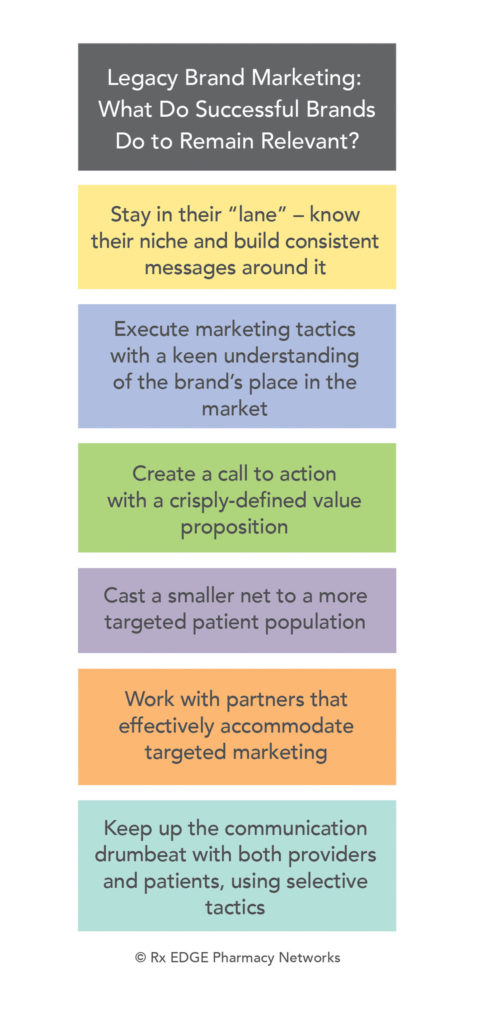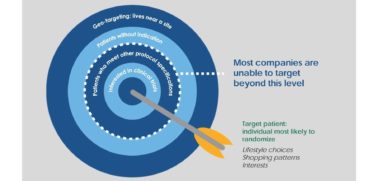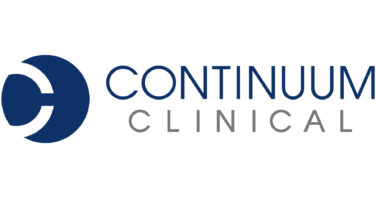Legacy brands can flourish in the face of patent expirations, new entrants, and OTC alternatives. We’ve seen legacy brands that successfully take on the challenges and have carved out a sustainable business as “the last brand standing” in their crowded categories. And we have found that by refocusing efforts around six pillars, marketers can take on all comers and find new ways to win with a brand they have already built into a success. These are:
- Stay in your lane: Call it “know your niche” if you find that easier to remember. Legacies need to stand for something and tell a consistent story.
- Understand your brand’s place in the market: Legacy strategy is not about trying to have it all. A growth-or-bust mentality probably isn’t realistic. So, you may need to cut back on expectations for year-over-year growth or recognize that managed care barriers such as step therapy may never go away. For example, if you know your brand is not going to be the first line of treatment, adjust your expectations and focus your strategies on being the second line of treatment.
- Create a call to action (CTA) around a crisp value proposition: Legacy brands can speak from a place of authority and experience. Consider a CTA that challenges patients to question why they’re not already choosing your brand or encourages them to consider new options to address their symptoms.
- Cast smaller and tighter nets to more targeted populations: Instead of trying to recreate the past, fine-tune your messaging to the patient populations that you know are not being best served by OTCs or generics.
- Work with partners who understand targeting: The mass-broadcast techniques of a brand’s growth stages won’t serve all the needs of a legacy strategy. Select media partners who can amplify your targeting and bring you the audiences you need.
- Keep the communication drumbeat going: To avoid disconnects, it’s important to have a consistent, coherent communications strategy for both healthcare providers and patients. Use compatible messaging to convey your unique value to both audiences. That way, the patient comes in with a good sense of their challenges and experiences, and HCPs are on the lookout for specific patients who would benefit most from your product.
 Also, stay fresh and distinct from the challengers. Your goal is to continue to be heard from your unique position of experience, not to join the noise that followed or preceded your trailblazing path.
Also, stay fresh and distinct from the challengers. Your goal is to continue to be heard from your unique position of experience, not to join the noise that followed or preceded your trailblazing path.










